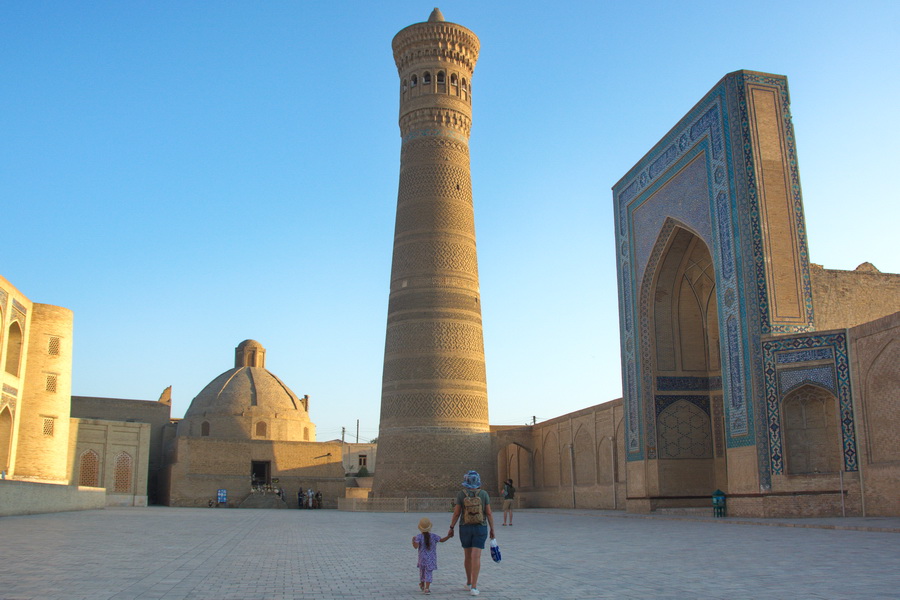
Bukhara is truly the jewel of Asia and a revered site for Muslims worldwide. Its stunning array of unique and beautiful locations requires at least two days to glimpse the major Bukhara attractions. However, if you wish to fully embrace the colors of an Eastern fairy tale and delve deep into ancient history, plan to spend at least four days.
The allure of Bukhara is not only in its wealth of historical and architectural gems but also in the unique rhythm of the old city. Surrounded by ancient neighborhoods, its streets weave into a mesmerizing labyrinth. To help you navigate this enchanting city, we've compiled a list of the top 10 things to do in Bukhara that together paint a vivid portrait of this grand Eastern city.
The Bukhara symbol is the 47-m high Kalyan minaret, built under the Karakhanids in the XII century. At that time, it was the highest minaret in Central Asia and served as a beacon, guiding trade caravans and pilgrims to Bukhara. This iconic minaret is a must-see among the Uzbekistan attractions. Another highlight is the Ark fortress – a citadel that served as the residence of local rulers for several centuries. The Samanid Mausoleum, Bukhara’s oldest monument erected early in the century, showcases elaborate beauty in its décor and the orderliness of its proportions. Not far from it lies another notable site, Chashma-Ayub, with a holy spring which, according to legend, was created by a strike of Saint Job’s staff.
1. Lyabi-Hauz Ensemble
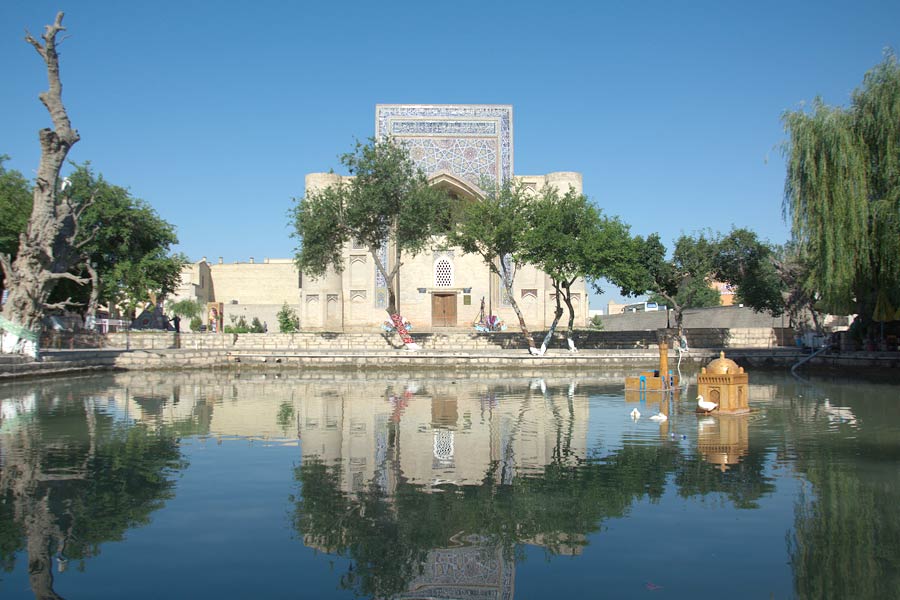
In hot climates, water bodies have always been a focal point for communities, and the Lyabi-Hauz in Bukhara is no exception. For centuries, it has served as a central gathering spot for the city's residents. Historically, water was drawn here for household use, and the area was home to a bazaar and a teahouse. Over time, the Nadir Divan-Begi and Kukeldash madrasahs, as well as the Nadir Divan-Begi khanaka, were built around it.
Today, Lyabi-Hauz remains the most popular spot in Bukhara! It is surrounded by dozens of hotels, serves as the starting point for many local tours, and features a large, cozy café in an oriental style right by the water. The area around Lyabi-Hauz is bustling well into the night.
2. Poi-Kalyan Ensemble
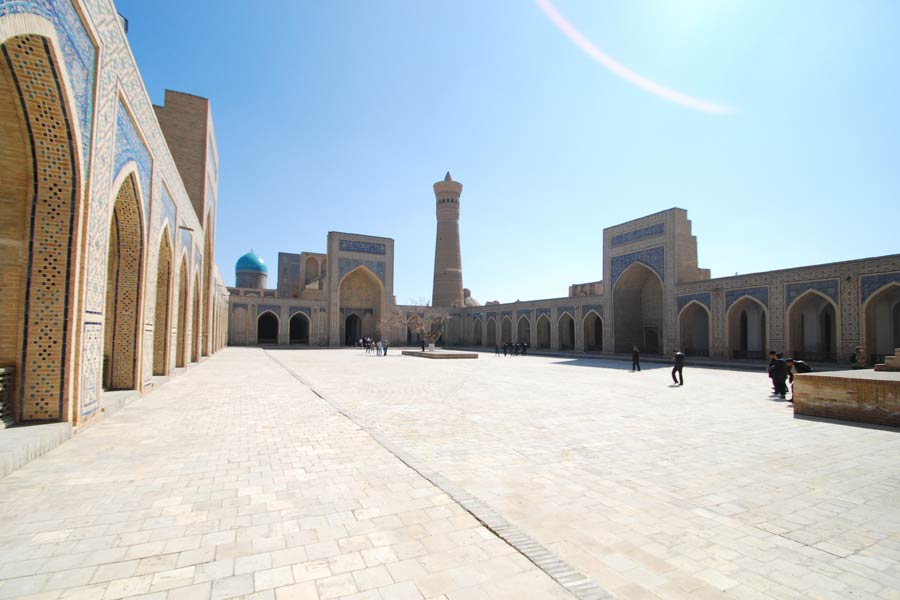
This architectural complex includes the small Amir-Alimkhan Madrasah, the large Miri-Arab Madrasah with its two striking blue domes, the expansive Kalyan Mosque complete with a mesmerizing colonnade, and the Kalyan Minaret, which has stood as the tallest structure in Bukhara for centuries.
Set aside at least two hours to explore the Poi-Kalyan complex, and make sure your camera is charged for taking beautiful, memorable photos of this picturesque site. The ensemble is conveniently located on the route from Lyabi-Hauz to the Ark fortress. Visiting this complex is a must thing to do Bukhara. We recommend visiting in the evening after your main tour to see the Kalyan Minaret beautifully illuminated by warm lighting.
3. Chor-Minor Madrasah
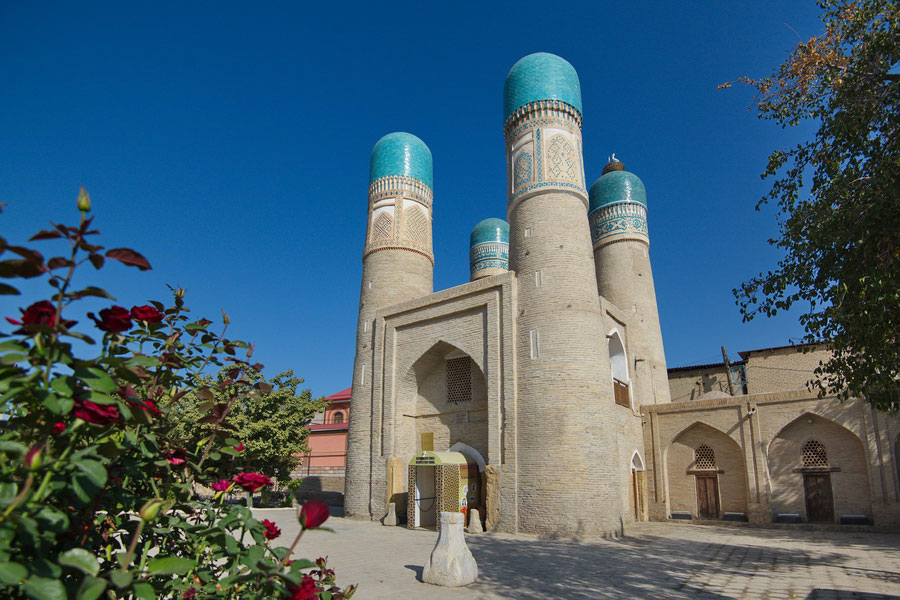
Chor-Minor Madrasah stands out as one of the most unique architectural structures in the city. Constructed in 1806, its name, which translates from Turkic as "four minarets," directly reflects its distinctive appearance. Each minaret boasts its own design quirks, and the madrasah's medieval interiors and staircases transport visitors straight into the ambiance of the East.
Today, Chor Minor Madrasah is nestled deep within an ancient quarter and is rightly counted among the top 10 things to do in Bukhara. Discovering it on your own without a guide or navigator becomes a delightful adventure in itself.
4. Samanid Mausoleum
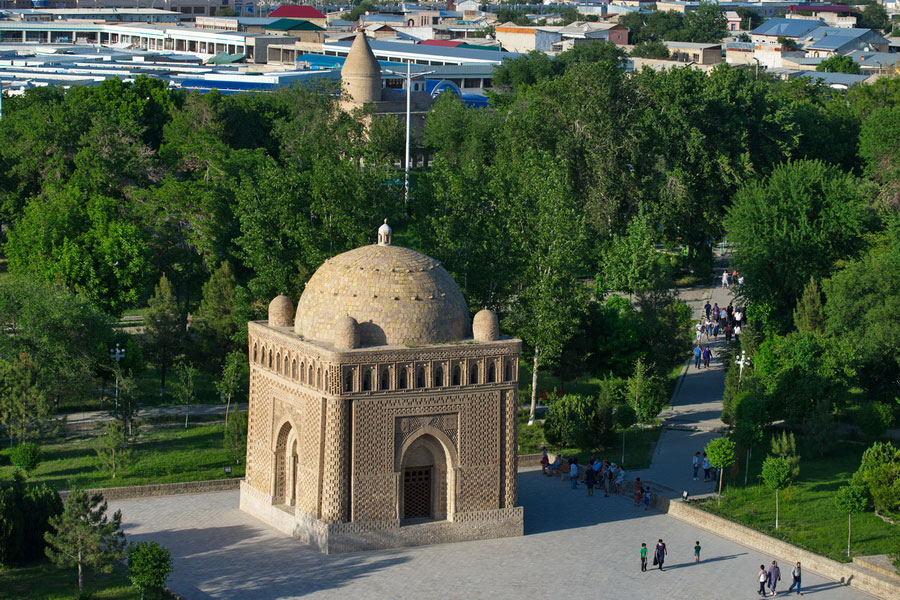
The Samanid Mausoleum is another emblem of Bukhara and showcases the craftsmanship of Central Asian architects. It dates back to the turn of the 9th and 10th centuries and remarkably survived the invasion of Genghis Khan's army. Legend has it that before the invasion, the locals concealed it by covering it with sand, forming a protective barchan dune over it.
The mausoleum is celebrated for its exquisite brickwork, visible both inside and out. Its architectural forms symbolize the unity of the Earth and the cosmos: the cube represents stability and the hemisphere symbolizes the heavens. Today, this stunning landmark stands in the center of a city park, close to another historic site, the Chashma-Ayub Mausoleum, which houses Bukhara's oldest well.
5. Ark Fortress

The Ark Citadel has been a prominent feature in Bukhara since the city's early days, possibly marking the location of the first settlement. Over time, the fortress expanded, and its walls were raised. It served as the palace of the Emir of Bukhara and remained functional until the early 20th century. In 1920, it suffered extensive damage from a massive air strike that destroyed most of its internal structures.
Today, the walls of the Ark Fortress stand 16-20 meters high and cover nearly 4 hectares. Inside, visitors can explore a small museum and several restored historical buildings, including a royal court for receiving guests and a mosque. Strolling inside of this fortress is a staple of city tours and this is a must thing to do in Bukhara.
6. Bolo-Hauz Mosque
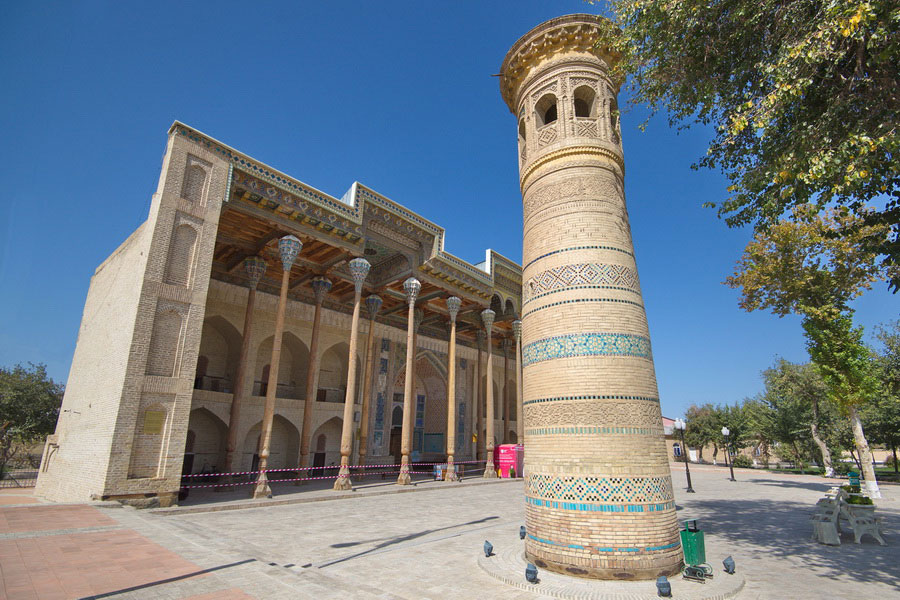
Directly across from the Ark Fortress is the Bolo-Hauz Mosque, another notable landmark of Bukhara. Named after a small artificial pond reminiscent of Lyabi-Hauz, it is considered one of the most beautiful mosques in the city. Its high, intricately carved columns and painted ceiling exude a distinct oriental charm, while a graceful minaret enhances its overall aesthetic.
Built in 1712, the mosque underwent its last major renovation in 1917. It once served as Bukhara's main Friday mosque and continues to function as an active place of worship today.
7. Abdulaziz Khan Madrasah
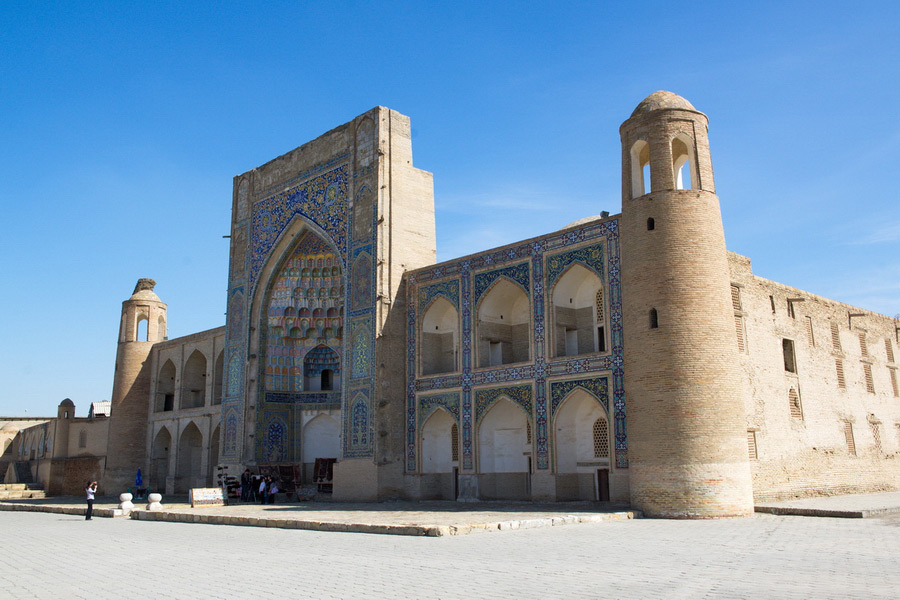
Featuring the most exquisite portal entrance not just in Bukhara, but across Uzbekistan, Abdulaziz Khan Madrasah is adorned with spectacular geometric designs and vibrant paintings. Inside, the madrasah houses several student cells (hujras) and a small winter mosque. Be sure to step inside to view the mosque room—its wall paintings include an image of the shaitan (devil), and legend has it that at dawn, the face of God can be seen.
Abdulaziz Khan Madrasah is justifiably counted among the top attractions in Bukhara. Across from it stands the older and more understated Ulugbek Madrasah, which, while not included in our top ratings, is also a historic site worth visiting.
8. Magoki Attori Mosque
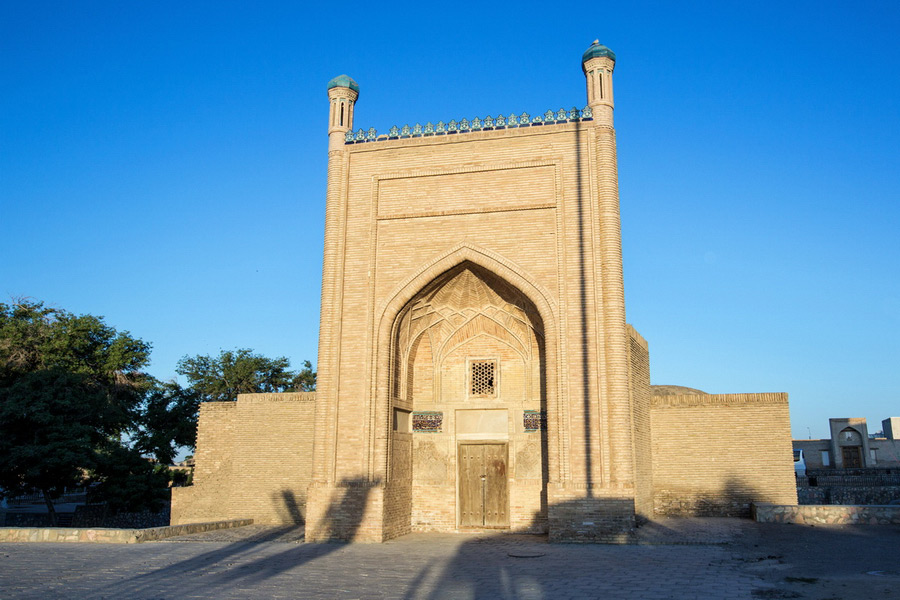
Magoki Attori is a unique mosque due to its semi-subterranean design, which has resulted from centuries of sand and earth accumulation almost burying it. Another interesting aspect is that the site was originally home to a Zoroastrian temple of moon worshippers before being transformed into a mosque where, notably, Bukhara Jews were also permitted to pray.
Today, the Magoki-Attori Mosque is easily recognizable by its striking terracotta and polished brick entrance portal. Inside, you'll find a small museum dedicated to carpets and a souvenir shop. This attraction in Bukhara is easy to overlook, so be sure to look for Magoki Attori nestled between the Toki Saraffon and Telpak Furushon shopping domes.
9. Bukhara’s Trading Domes
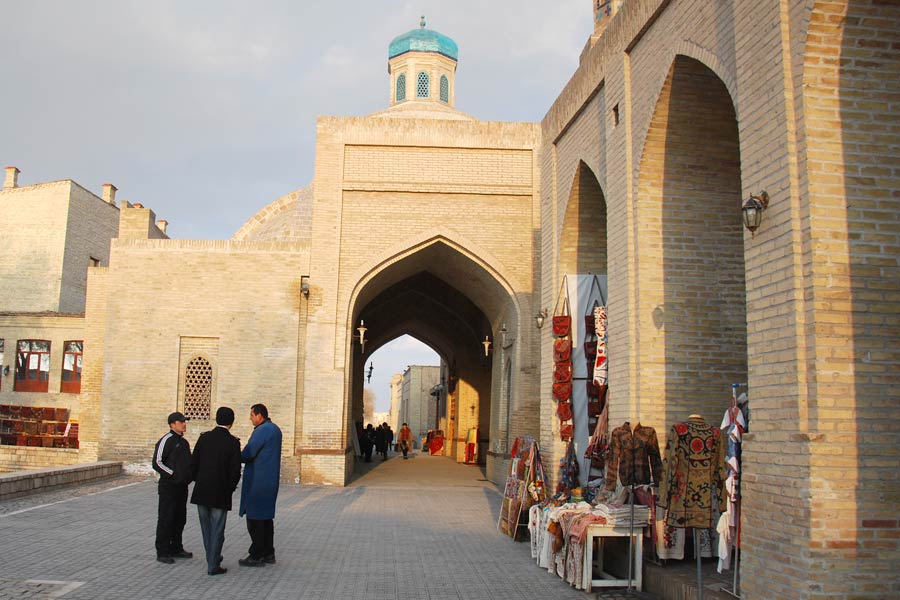
Rather than a single Bukhara's attraction, trading domes are a collection of four historic structures unified by their original purpose. In the heyday of the Great Silk Road, these domes marked the bustling trading centers in the city, each specializing in different goods. Today, these domes still function as marketplaces.
Starting close to Lyabi-Hauz, the Toki Saraffon dome was historically a hub for currency exchange; next, the Telpak Furushon dome specialized in books; the Tim Abdullahan dome was known for trading fabrics and carpets, a tradition that continues; and finally, the Toki Zargaron dome served jewelers and still features shops selling oriental jewelry today. Be prepared for tempting artisanal crafts and souvenirs—bringing extra money is a good idea. Visiting all these domes is a must thing to do in Bukhara.
10. Sitorai Mohi-Khosa Palace
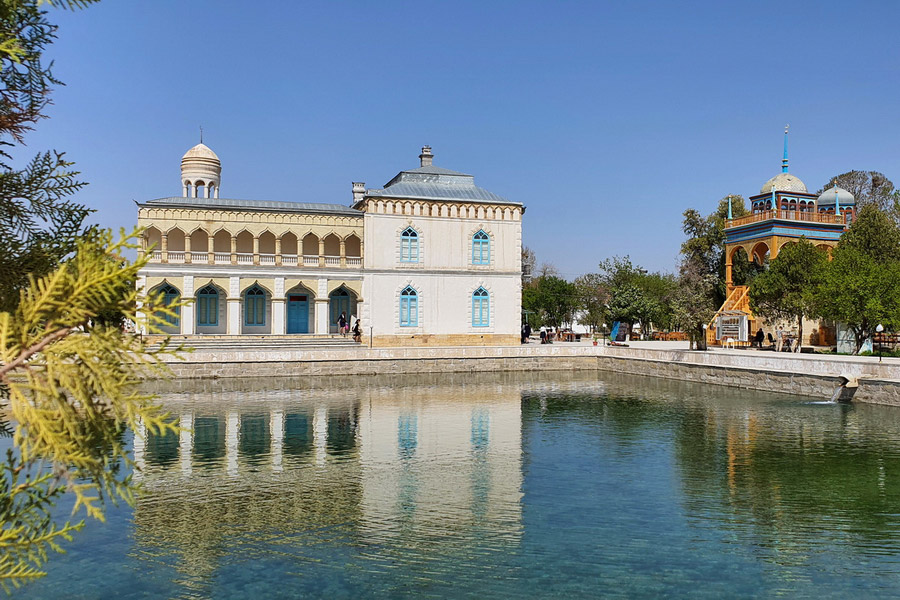
Just 2 km outside the city and 7 km from Lyabi-Hauz, the Sitorai Mohi-Khosa Palace stands as a historical and cultural monument blending Eastern and European architectural styles. This palace is a noteworthy addition to our top 10 Bukhara things to do list, showcasing the rich history and architectural diversity of the region. Constructed between 1912 and 1918 by order of the last Emir of Bukhara, the palace is now surrounded by a quaint park and its halls converted into a museum of applied arts. The original reception areas, tea room, and guest house have been meticulously preserved.
Typically included in a day tour of Bukhara, visits to the palace often coincide with stops at the Chor Bakr necropolis and Naqshbandi mausoleum, offering a full day of exploration.
Our list of the top 10 things to do in Bukhara would not be complete without highlighting a few nearby locations that are equally deserving of a visit:
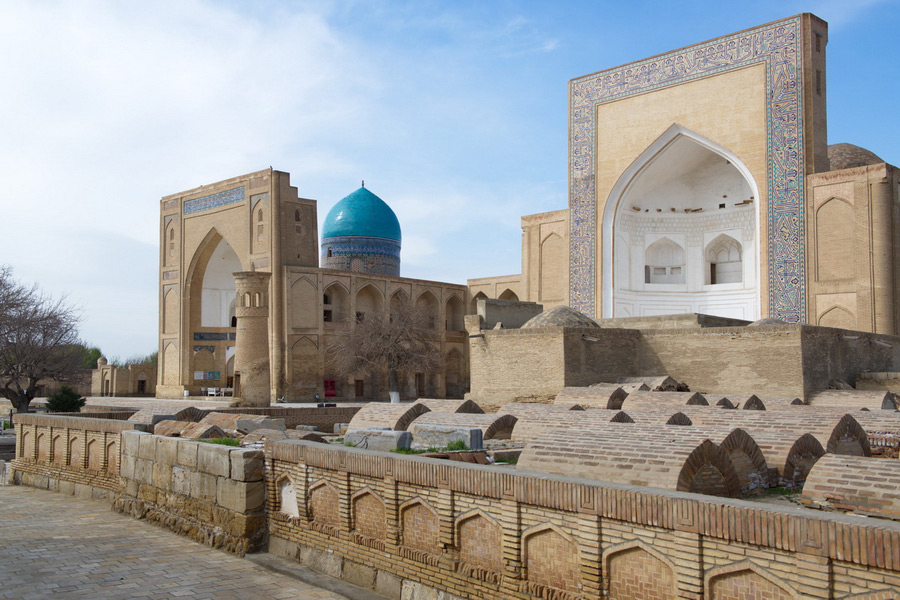
Chor-Bakr is a medieval necropolis located 5 kilometers west of Bukhara. Today, this tranquil complex encompasses 30 buildings, including mausoleums, a mosque, and a minaret. A visit here offers a serene experience, where the quiet almost lets you touch the ancient world.
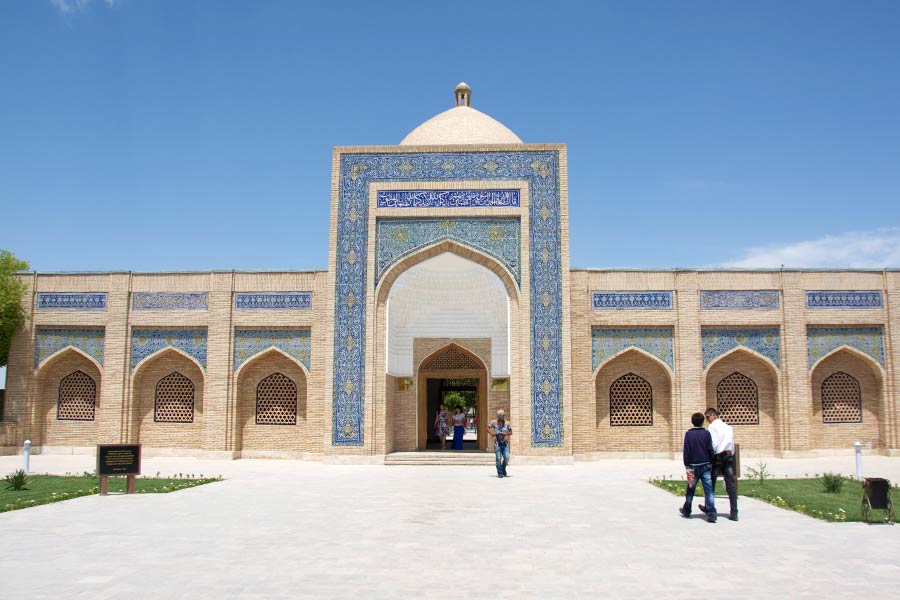
The Naqshbandi Mausoleum is an important memorial complex situated 12 km east of Bukhara. It is the resting place of the revered Sufi saint Bahauddin Naqshbandi, founder of one of the largest Sufi orders.
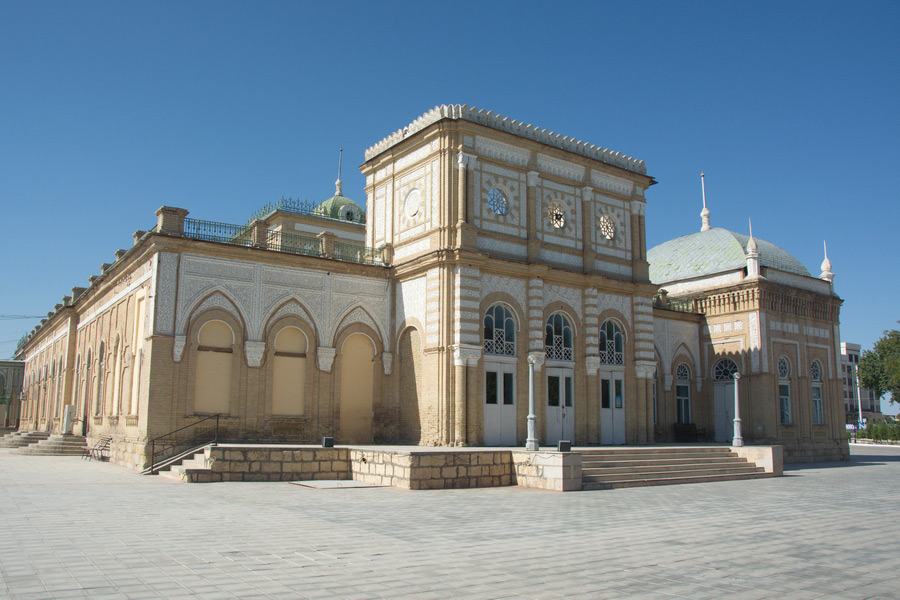
The Emir's Palace in Kagan is a unique architectural marvel that blends Baroque, Empire, and Neo-Moorish styles. Constructed between 1895 and 1898 in anticipation of Russian Emperor Nicholas II's visit, it is easily visible to those arriving by train, as it stands near the station in the town of Kagan, just 12 km from Bukhara.
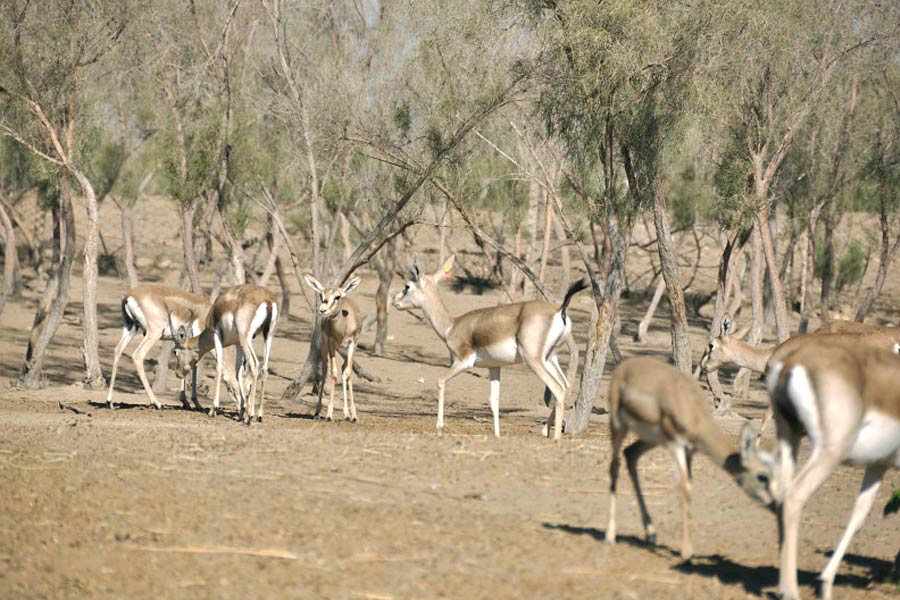
Lastly, the Ecocenter Jeyran is worth a visit while in Bukhara. This conservation site offers a chance to observe rare animals and explore the flora and fauna of the Bukhara region, providing a fascinating glimpse into the area’s natural heritage.

